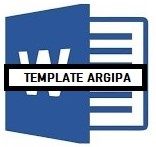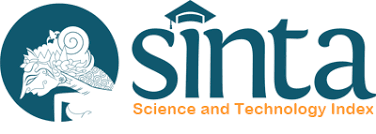Compliance in consuming Fe tablets, adequacy level of Fe and Vitamin B12 consumption associated with anemia in pregnant women
DOI:
https://doi.org/10.22236/argipa.v6i1.5917Keywords:
Anemia, Vitamin B12, FeAbstract
Anemia is a common nutritional problem in pregnant women, which can have an impact on morbidity and mortality in pregnant women and fetuses. Anemia is closely related with intake of nutrients such as iron and vitamin B12 which are essential for the formation of blood hemoglobin (Hb) for the oxygen supply from blood cells to tissues. The purpose of this study is to analyze the relationship of iron supplementation, adequacy of Fe consumption and vitamin B12 with anemia based on Hb levels. The research method uses cross sectional design for pregnant women as many as 80 people. The collection of compliance data in consuming iron was carried out using questionnaires, intake data was collected by food frequency method, while anemia data was collected by looking at secondary data. Analysis of relationships between variables using pearson chi square statistical test. The results showed significant relationship between compliance in consuming Fe tablets, adequacy levels of Fe and vitamin B12 with anemia (p<0.05). There is a need for motivation in fulfilling the nutritional adequacy of pregnant women, because the role of nutrition during pregnancy is so important, so that a good pregnancy, and optimal health for both mother and fetus can be realized.
Downloads
References
Agustina, EE., Laksono, B., & Indriyanti DR. (2017). Determinan Risiko Anemia pada Remaja Putri Berdasarkan Jenjang Pendidikan di Kabupaten Kebumen. Public Health Perspective Jurnal, Vol. 2, No. 1, 26-33.
Argaw, D., Hussen Kabthymer, R., & Birhane, M. (2020). Magnitude of Anemia and Its Associated Factors Among Pregnant Women Attending Antenatal Care in Southern Ethiopia: A Cross-Sectional Study. Journal of blood medicine, 11, 335–344. https://doi.org/10.2147/JBM.S264369.
Badan Penelitian dan Pengembangan Kesehatan. (2018). Riset Kesehatan Dasar (Riskesdas 2018), Badan Litbang Kesehatan, Jakarta.
Comb, JF. (2012). The Vitamin: fourth edition. Elsevier, United States of America.
Darawati, Made. (2017). Ilmu Gizi: Teori dan Aplikasi, Gizi Ibu Hamil. Jakarta: EGC.
Derso, T., Abera, Z., & Tariku, A. (2017). Magnitude and Associated Factors of Anemia Among Pregnant Women in Dera District: A Cross-Sectional Syudy in Northwest Ethiopia. BMC Reseach Notes, 2017, 10:359. DOI 10.1186/s13104-017-2690-x.
Dinas Kesehatan Hulu Sungai Utara. (2019). Laporan Tahunan DinKes Hulu Sungai Utara Tahun 2019.
Gibson RS. (2005). Principles of nutritional assessment 2 nd Ed. New York: Oxford University, Press Inc.
Kemenkes RI. (2018). Pentingnya Konsumsi Tablet Fe bagi Ibu Hamil. https://promkes.kemkes.go.id/, diakses pada tanggal 16 November 2020.
Nugroho, F., Handayani, D., Apriyani, Y. (2015). Asupan protein nabati dan kejadian anemia wanita usia subur vegan. J Gizi Pangan, Vol. 10, No. 3, 165-70.
Okube, O., Mirie, W., Odhiambo, E., Sabina, W., & Habtu, M. (2016). Prevalence and Factors Associated with Anaemia among Pregnant Women Attending Antenatal Clinic in the Second and Third Trimesters at Pumwani Maternity Hospital, Kenya. Open Journal of Obstetrics and Gynecology, 6, 16-27. doi: 10.4236/ojog.2016.61003.
Patimah, S., Hadju, V., Bahar, B., & Abdullah, Z. (2011). Pola Konsumsi dan Kadar Hemoglobin pada Ibu Hamil di Kabupaten Maros, Sulawesi Selatan. Makara, Kesehatan, Vol. 15, No. 1, 31-36.
Solihah, N., Andari, S., & Wirjatmadi, B. (2019). Hubungan Tingkat Konsumsi Protein, Vitamin C. Zat Besi dan Asam Folat dengan Kejadian Anemia pada Remaja Putri SMAN 4 Surabaya. Amerta Nutr (2019): 135-141. https:// doi: 10.20473/amnt.v3.i3.2019.135-141.
Sun, D., McLeod, A., Gandhi, S., Malinowski, AK., & Shehata N. (2017). Anemia in Pregnancy: A Pragmatic Approach. Obstet Gynecol Surv, Vol. 72, No. 12, December, 730-737. doi: 10.1097/OGX.0000000000000510. PMID: 29280474.
WHO. (2011). Haemoglobin Concentrations for the Diagnosis of Anaemia and Assessment of Severity. Vitamin and Mineral Nutrition Information System. Geneva: World Health Organization. Available from: http://www.who.int/vmnis/indicators/haemoglobin. Pdf.
WHO. (2012). Worldwide Prevalence of Anemia 2000 – 2012. WHO Global Database on Anemia Geneva, World Health Organization.
Wijayanti, E., & Fitriani, U. (2019). Profil Konsumsi Zat Gizi pada Wanita Usia Subur Anemia. Media Gizi Mikro Indonesia, Vol. 11, No. 1, Desember, 39-48.
Yuliati, H., Widajanti, L., & Aruben, R. (2017). Hubungan Tingkat Kecukupan Energi, Protein, Besi, Vitamin C dan Suplemen Tablet Besi dengan Kadar Hemoglobin Ibu Hamil Trimester II dan III. Jurnal Kesehatan Masyarakat (e-Journal). Vol. 5, No. 4, Oktober, 675-682.

















